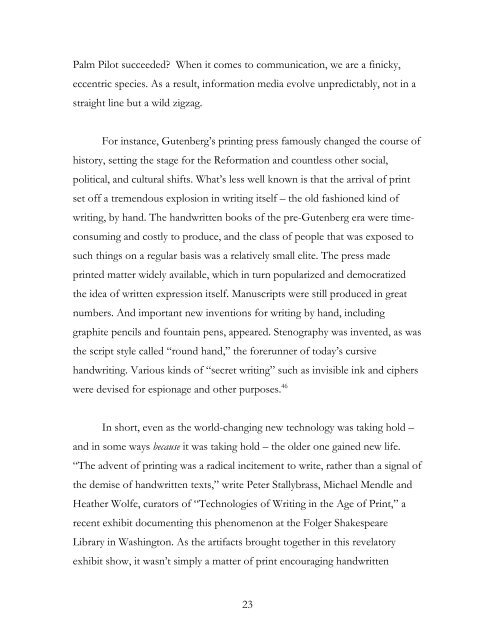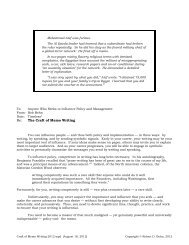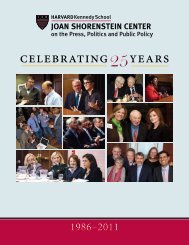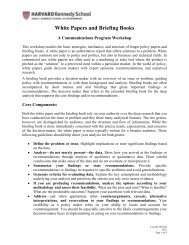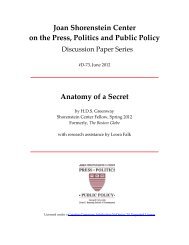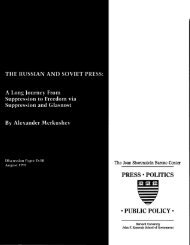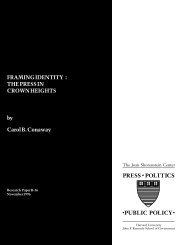Why Paper Is Eternal - Joan Shorenstein Center on the Press ...
Why Paper Is Eternal - Joan Shorenstein Center on the Press ...
Why Paper Is Eternal - Joan Shorenstein Center on the Press ...
You also want an ePaper? Increase the reach of your titles
YUMPU automatically turns print PDFs into web optimized ePapers that Google loves.
Palm Pilot succeeded? When it comes to communicati<strong>on</strong>, we are a finicky,<br />
eccentric species. As a result, informati<strong>on</strong> media evolve unpredictably, not in a<br />
straight line but a wild zigzag.<br />
For instance, Gutenberg’s printing press famously changed <strong>the</strong> course of<br />
history, setting <strong>the</strong> stage for <strong>the</strong> Reformati<strong>on</strong> and countless o<strong>the</strong>r social,<br />
political, and cultural shifts. What’s less well known is that <strong>the</strong> arrival of print<br />
set off a tremendous explosi<strong>on</strong> in writing itself – <strong>the</strong> old fashi<strong>on</strong>ed kind of<br />
writing, by hand. The handwritten books of <strong>the</strong> pre-Gutenberg era were time-<br />
c<strong>on</strong>suming and costly to produce, and <strong>the</strong> class of people that was exposed to<br />
such things <strong>on</strong> a regular basis was a relatively small elite. The press made<br />
printed matter widely available, which in turn popularized and democratized<br />
<strong>the</strong> idea of written expressi<strong>on</strong> itself. Manuscripts were still produced in great<br />
numbers. And important new inventi<strong>on</strong>s for writing by hand, including<br />
graphite pencils and fountain pens, appeared. Stenography was invented, as was<br />
<strong>the</strong> script style called “round hand,” <strong>the</strong> forerunner of today’s cursive<br />
handwriting. Various kinds of “secret writing” such as invisible ink and ciphers<br />
were devised for espi<strong>on</strong>age and o<strong>the</strong>r purposes. 46<br />
In short, even as <strong>the</strong> world-changing new technology was taking hold –<br />
and in some ways because it was taking hold – <strong>the</strong> older <strong>on</strong>e gained new life.<br />
“The advent of printing was a radical incitement to write, ra<strong>the</strong>r than a signal of<br />
<strong>the</strong> demise of handwritten texts,” write Peter Stallybrass, Michael Mendle and<br />
Hea<strong>the</strong>r Wolfe, curators of “Technologies of Writing in <strong>the</strong> Age of Print,” a<br />
recent exhibit documenting this phenomen<strong>on</strong> at <strong>the</strong> Folger Shakespeare<br />
Library in Washingt<strong>on</strong>. As <strong>the</strong> artifacts brought toge<strong>the</strong>r in this revelatory<br />
exhibit show, it wasn’t simply a matter of print encouraging handwritten<br />
23


